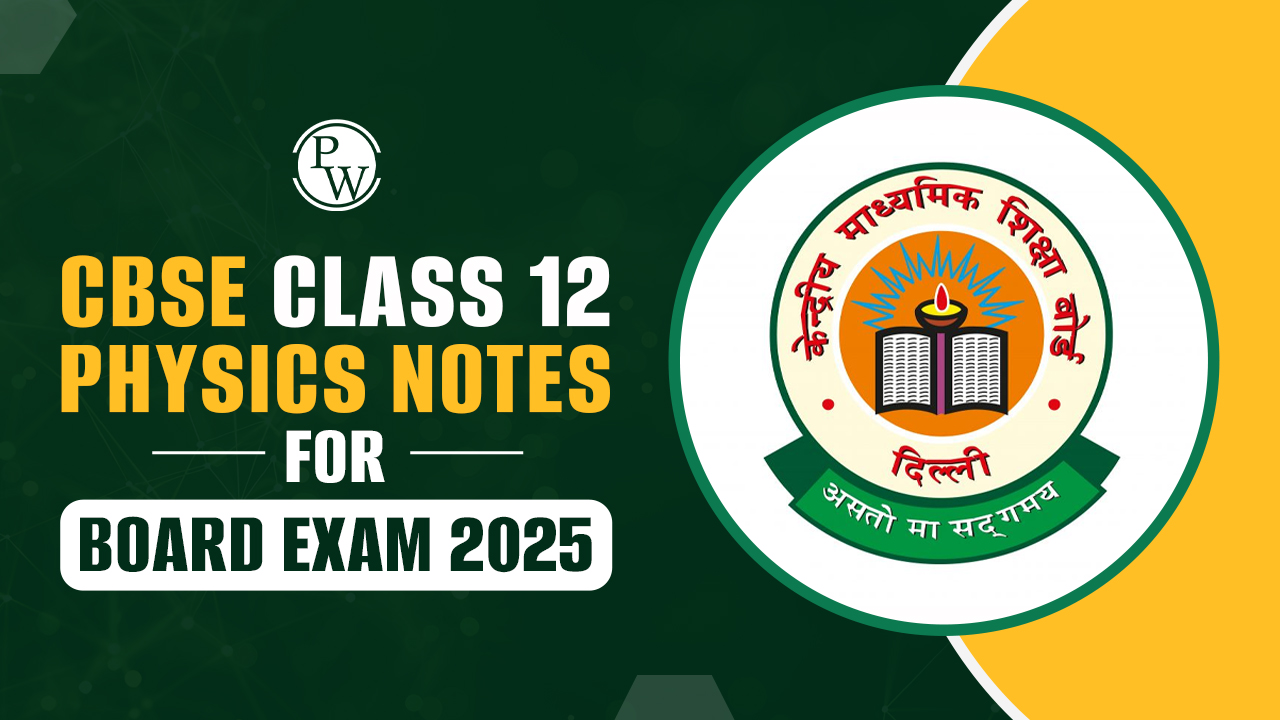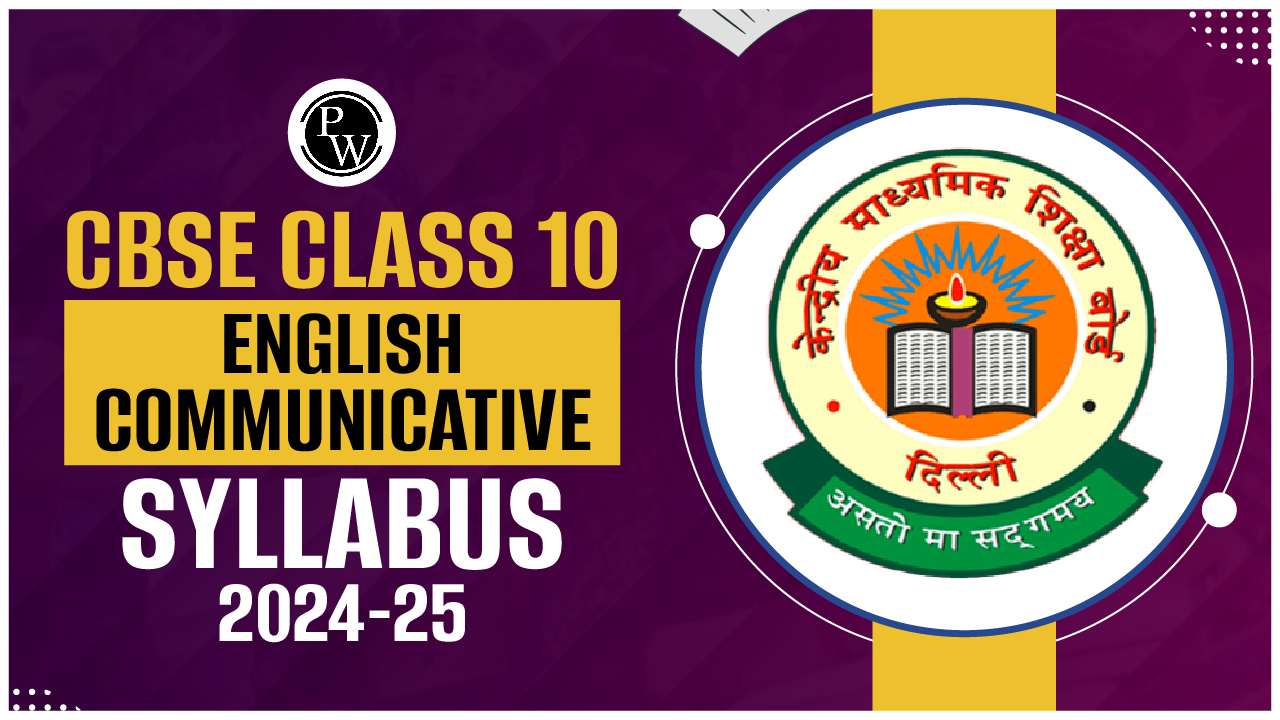CBSE Class 12 Physics Notes for Board Exam 2025

12th Physics Notes:- Explore our comprehensive Class 12 notes designed specifically for students tackling the complexities of 12th physics. These Class 12th physics notes cover key topics such as electric charges, magnetism, electromagnetism, and optics, ensuring a clear understanding of the subject. Our Class 12 physics notes PDF includes essential definitions, formulas, and practical examples, making it an invaluable resource for exam preparation. Whether you're looking for the physics notes for Class 12 or simply need effective notes physics class 12, our guide will help you master the concepts with ease.
Check out: CBSE Class 12th Books
12th Physics Notes
Check out the class 12 notes here. Also, check out the class 12 physics notes pdf below.
Chapter 1: Electric Charges and Fields
-
Introduction to Electric Charge: This section covers the types and interactions of electric charges, emphasizing the conservation and quantization of charge.
-
Coulomb’s Law: Coulomb's Law describes the force between point charges, highlighting its inverse square relationship with distance and direct correlation with charge magnitudes.
-
Understanding Electric Field: An electric field is defined as the area around a charge where other charges feel a force. This includes how to calculate it for point and continuous charge distributions.
-
Gauss’s Law: Gauss's Law links electric fields to charge distributions, providing methods to calculate fields for symmetrical shapes like spheres and cylinders.
-
Electric Dipole Dynamics: This section explores electric dipoles, defining dipole moments and explaining how they align in electric fields, affecting potential energy.
Read More: NCERT Solutions For Class 12 Physics Chapter 1 Electric Charges and Fields
Chapter 2: Electrostatic Potential and Capacitance
-
Electrostatic Potential: The section connects electrostatic potential energy to the work done in bringing a charge into an electric field, defining potential as energy per unit charge.
-
Calculating Potential Difference and Work Done: This part explains the work required to move a charge in an electric field, emphasizing potential difference and its role in circuits.
-
Understanding Capacitance: Capacitance measures a system's ability to store charge per unit voltage, discussing types of capacitors and their configurations in circuits.
-
Dielectrics and Their Impact: This section examines how dielectrics enhance capacitance and electric fields, including their properties and applications in capacitors.
Read More: NCERT Solutions For Class 12 Physics Chapter 2 Electrostatic Potential and Capacitance
Chapter 3: Current Electricity
-
Definition of Electric Current: Electric current is defined as the flow of charge, detailing conventional current and electron flow along with its measurement.
-
Ohm’s Law Explained: Ohm's Law explains the relationship between voltage, current, and resistance, covering resistance concepts and real-world applications.
-
Exploring Electrical Circuits: This section analyzes series and parallel circuits using Kirchhoff’s laws for problem-solving in complex circuit configurations.
-
Heating Effects and Electric Power: The heating effect of electric current in resistive materials is discussed, including power calculations and practical engineering applications.
Read More: NCERT Solutions For Class 12 Physics Chapter 3 Current Electricity
Chapter 4: Moving Charges and Magnetism
-
Magnetic Field Concepts: This section explains how magnetic fields are created by moving charges and currents, including the force on a charge in a magnetic field.
-
Biot-Savart Law: The Biot-Savart Law calculates magnetic fields produced by currents, including mathematical examples and applications for different geometries.
-
Understanding Ampere’s Law: Ampere's Law describes the connection between electric current and the magnetic field it generates, applied to symmetrical current configurations.
-
Material Magnetism: This part discusses magnetic properties like diamagnetism and ferromagnetism, explaining their atomic-level origins and practical applications.
Read More: NCERT Solutions for Class 12 Physics Chapter 4 Moving Charges and Magnetism
Chapter 5: Magnetism and Matter
-
Earth’s Magnetic Field: This section explores Earth’s magnetic field characteristics, its origin, and measurement techniques relevant to navigation.
-
Magnetization: Magnetization describes how materials respond to magnetic fields, covering the behavior of magnetic dipoles in external fields.
-
Magnetic Phenomena: This part examines phenomena like hysteresis and magnetic domains, discussing their implications in technology and everyday applications.
Chapter 6: Electromagnetic Induction
-
Faraday’s Laws of Induction: This section outlines Faraday’s laws, detailing how changing magnetic fields induce electromotive force (EMF) and current.
-
Lenz’s Law: Lenz’s Law describes the direction of induced currents, emphasizing energy conservation and practical examples in electrical devices.
-
Inductance Concepts: This part discusses self and mutual inductance, providing definitions and formulas for use in various electrical circuits.
Chapter 7: Alternating Current
-
Fundamentals of AC: This section introduces alternating current (AC), explaining its key terms and how it differs from direct current (DC).
-
Analyzing AC Circuits: The analysis of RLC circuits is presented, focusing on the interaction of resistors, inductors, and capacitors, and the concept of resonance.
-
Power Calculations in AC Circuits: This part explains how to calculate power in AC circuits, discussing real, reactive, and apparent power, as well as power factors.
Check out: CBSE Class 12 Physics Sample Question Papers for 2025 Exam
Chapter 8: Electromagnetic Waves
-
Propagation of Waves: This section covers the basics of electromagnetic wave propagation, discussing wave characteristics such as wavelength and frequency.
-
The Electromagnetic Spectrum: A comprehensive overview of the electromagnetic spectrum is presented, detailing types of waves and their applications in technology.
-
Maxwell’s Equations: This part introduces Maxwell’s Equations, essential for understanding how electric and magnetic fields interact and propagate.
Chapter 9: Ray Optics and Optical Instruments
-
Laws of Reflection and Refraction: This section explains how light reflects and refracts, with practical applications involving lenses and optical fibers.
-
Optical Instruments Explained: Various optical instruments are discussed, showing how they manipulate light to magnify images and enhance our understanding of distant objects.
-
Interference and Diffraction Principles: Basic principles of light interference and diffraction are covered, exploring their applications in optical device design.
Chapter 10: Wave Optics
-
The Wave Nature of Light: This section reinforces light's wave properties, discussing interference and diffraction patterns in classical and modern physics contexts.
-
Young’s Double-Slit Experiment: A detailed analysis of Young’s experiment illustrates the wave nature of light through observable interference patterns.
-
Chapter 11: Dual Nature of Radiation and Matter
-
Exploring the Photoelectric Effect: The photoelectric effect shows how light ejects electrons from materials, highlighting light's particle-like behavior and its significance in quantum theory.
-
De Broglie Hypothesis: This part introduces the de Broglie hypothesis, discussing wave-particle duality of matter and its implications for understanding subatomic particles.
Chapter 12: Atoms
-
Atomic Structure: This section reviews atomic models, focusing on Rutherford’s and Bohr’s theories, including the arrangement of subatomic particles.
-
Understanding Spectra: Atomic spectra are explored for their significance in spectroscopy, highlighting how emission and absorption spectra reveal electronic structure.
Read More: NCERT Solutions For Class 12 Physics, Chapter Wise PDF
Chapter 13: Nuclei
-
Nuclear Structure: This section discusses atomic nuclei properties, including stability, binding energy, and the forces maintaining nuclear structure.
-
Radioactivity: An exploration of radioactive decay types, including alpha, beta, and gamma decay, highlights radioactivity's applications in various fields.
Chapter 14: Semiconductor Electronics
-
Introduction to Semiconductors: This section explains semiconductor properties and applications, including intrinsic and extrinsic types.
-
PN Junctions and Diodes: The formation of diodes from PN junctions is discussed, focusing on their behavior in circuits and applications in rectification.
-
Transistors and Their Applications: This part covers transistors, their types, and roles in amplifiers and switching circuits within modern electronics.
Chapter 15: Communication Systems
-
Basics of Communication Systems: This section introduces key components involved in transmitting and receiving information in communication systems.
-
Modulation Techniques: Various modulation techniques, like AM and FM, are discussed for their importance in efficient signal transmission.
-
Overview of Communication Technologies: The chapter concludes with modern communication technologies, including satellite and digital systems, highlighting their everyday applications.
Check out: Class 12th Sample Papers Book
Class 12 Physics Notes PDF
The CBSE Class 12 Physics Question Bank 2024-2025 is a valuable tool for students looking to do well in their exams. This resource provides solved questions organised by chapter and topic, making it easy to understand important concepts and improve problem-solving skills. Each question is designed to match the latest CBSE syllabus, helping students prepare effectively. With clear explanations and step-by-step solutions, this question bank is perfect for revision and self-testing, giving students the confidence they need to succeed in physics.
Benefits of 12th Physics Notes
-
Clear Understanding: 12th physics notes help break down complicated topics, making it easier for students to understand key concepts. This clarity is vital for doing well in exams and grasping the subject.
-
Easy Revision: With class 12 notes, students have a handy summary of important theories and formulas. This makes it quick and easy to revise before exams without having to read through entire textbooks.
-
All Topics Covered: The class 12th physics notes include everything needed for the CBSE syllabus. This means students can study systematically and ensure they don't miss any important topics.
-
Practice with Examples: Many class 12 notes physics come with solved questions. These examples show how to apply theories in problem-solving, boosting students' confidence and helping them prepare for their exams.
-
Convenient Format: Available as class 12 physics notes pdf, these notes are easy to download and can be accessed on various devices. This allows students to study whenever and wherever they want.
-
Comparative Learning: Using the physics notes for class 12, students can compare their understanding with clear summaries and examples. This helps them see what they need to focus on more.
-
Better Exam Preparation: By focusing on key ideas in notes physics class 12, students get ready for both the theoretical and practical parts of their exams. This ensures they feel well-prepared for every aspect of the test.
Check out: Class 12th Question Banks Books
Physics NCERT Class 12 FAQS
1. What topics are covered in Class 12 Physics?
Class 12 physics notes cover topics such as electrostatics, current electricity, magnetic effects of current, optics, and modern physics, among others.
2. How can I use 12th physics notes for better exam preparation?
Use 12th physics notes to summarise key concepts, review important formulas, and practice numerical problems to reinforce your understanding.
3. What is the importance of solving previous years' questions in physics?
Solving previous years' questions helps you understand the exam pattern, types of questions, and key topics frequently tested, enhancing your preparation for Class 12 physics exams.
4. How can I improve my problem-solving skills in physics?
Regular practice using notes physics class 12, focusing on solved examples, and attempting a variety of numerical problems can greatly improve your problem-solving skills.
5. Are online resources available for Class 12 physics notes?
Yes, there are many websites offering comprehensive class 12 notes physics and practice questions in PDF format, making them accessible for students such as Physics Wallah.









